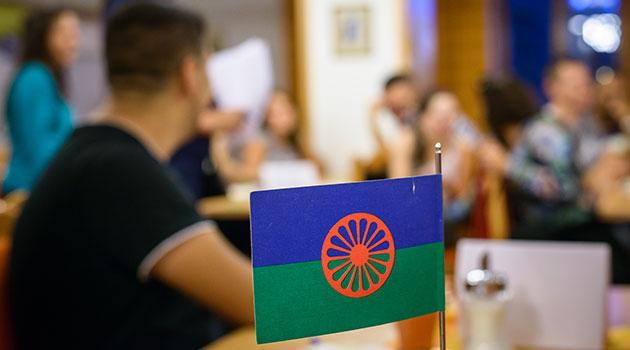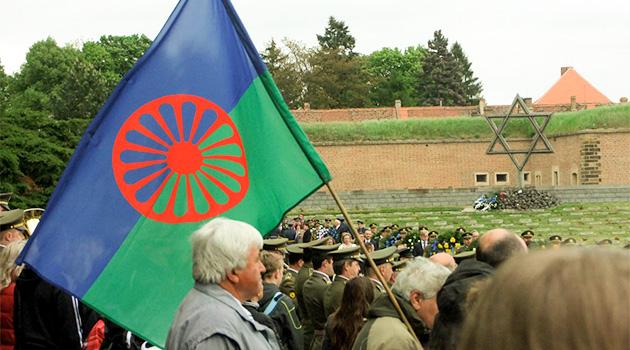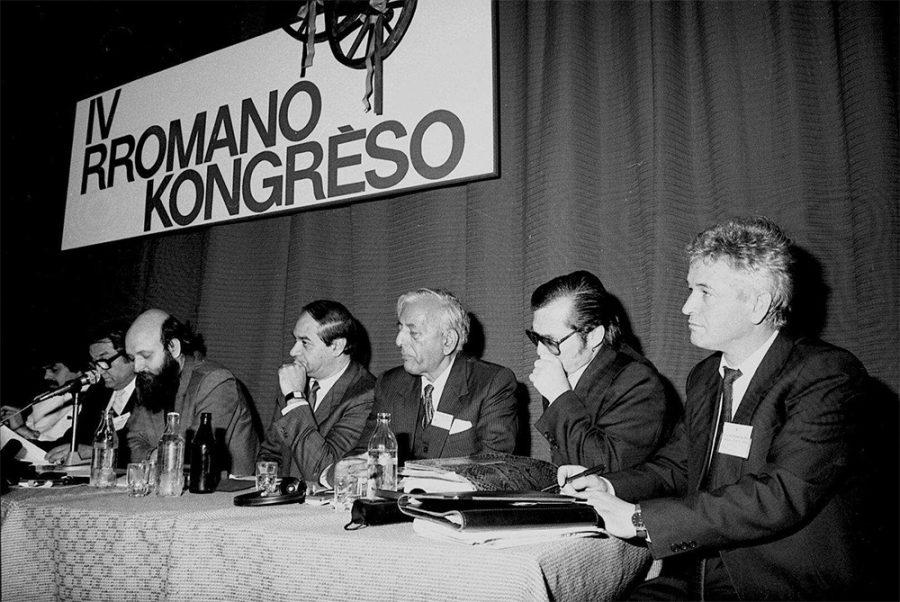Romani people worldwide celebrate International Romani Day today, 8 April

Monday, 8 April 2024 is the day when Romani people worldwide celebrate International Romani Day. The day marks a milestone in the history of the Romani nation.
A congress of Romani people from various European countries was held from 7 – 12 April 1971 near London, England in the town of Orpington. It was exactly on 8 April 1971 tha the crucial negotiations now celebrated every year took place.
The basis was established during the congress for international cooperation among Romani people and the Romani movement acquired its international sociopolitical significance. Every year, Romani people celebrate their cooperation, their culture, their language, their origins and their unity, and above all, they celebrate their Romipen (Romani-ness).
That first congress was held chiefly thanks to the joint initiative of Slobodan Berberski, Ján Cibula, Juan de Dios Ramirez Heredia, Grattan Puxon and Vanko Rouda. Interpretation was performed by Donald Kenrick and Mateo Maximoff.
The congress was attended by 23 representatives from 10 countries (the Czechoslovak Socialist Republic, Finland, France, Germany, Great Britain, the Hungarian People’s Republic, Ireland, the Socialist Federal Republic of Yugoslavia, Spain) and by observers from Belgium, Canada, India and the United States of America. The congress was attended by four members from the Czechoslovak Socialist Republic, where the organization called the Union of Gypsies/Roma was allowed to function in both the Czech and Slovak parts of the country.
According to a report published thereafter in Romano Ľil, the bulletin of the Union of Gypsies/Roma, the Czechoslovak Romani delegates were actively involved in the events of the congress. They spoke various dialects of Romanes as well as Russian with the other delegates.
During the First World Roma Congress, different working groups were created for the fields of education, a legal and social group on compensating the victims of Nazism and the Second World War, and a social welfare working group. “Let’s remember that the first congress was held in 1971, when the Holocaust of the Roma was not yet recognized. Apart from that, Romani people in various countries faced assimilation, their children were denied access to education, and they were significantly more disadvantaged socially in comparison with the majority societies in the countries where they lived. The congress wanted to respond to those problems in particular,” Romani historian Michal Mižigár has written for Romea.cz.
The participants and observers agreed on the form of the Romani anthem and flag. One of the main outputs of the congress was also the rejection of the term “Gypsy” to refer to Romani people and the adoption of the autonym “Roma”.
“Romani delegates from different lands wanted to stop the use of insulting labels for Romani people such as, for example, Cikán (in Czech), Cigán (in other Slavic languages), Gypsy (in English), Gitano (in Spanish) or Zigeuner (in German). Those names originated in the Byzantine Empire, between 800 and 1000 CE, when a group called the Athinganoi was considered to be a sect and was hated. The Byzantines called Romani people ‘Athinganoi’ (from which the names above derive) because they were similarly on the outskirts of society and were involved with worldly matters such as fortune-telling, which in the Chrisitian society of the day was forbidden because it was considered a sin. Another name at the time that formed the basis for the words Gitano and ‘Gypsy’ comes from calling the Roma Egyptoi (Egypťians), meaning they came from the Little Egypt region (located in what is Greece today), erroneously interpreted to mean the Egypt of today. Currently we see that neither of these designations, Athinganoi or Egyptoi, referred to the Romani people at all. Since the Roma were on the outskirts of society, they were never in a position to decide on their own self-determination,” Mižigár explains.
The flag used at the congress by the organizers and participants had been originally adopted at a 1933 gathering of Romani people in Bucharest, Kingdom of Romania. The flag originally comprised just a field of blue and a field of green.
In the upper part of the flag, the blue color represents the heavens, while below the color green represents the earth. Those attending the 1971 congress decided to add the red wheel, the Ashoka Chakra, at the center to reference the authentic homeland of the Roma, India; the addition was motivated by the positive relations of the Roma with Indian diplomats to Great Britain.

The Romani anthem, Gelem, gelem, was adopted at the congress and its melody comes from the folk songs of Roma in Romania. The anthem’s lyrics were composed by a Romani musician from Yugoslavia, Žarko Jovanović.
It has been quite frequently and erroneously reported that the International Romani Union (IRU) was created at the first congress in 1971. However, the IRU was not created until 1977, in order to meet the requirements for the smooth running of the 1978 Second World Roma Congress in Geneva, Switzerland.
In 1979, the IRU officially registered with the United Nations as a non-governmental organization. At the Second World Roma Congress, the idea was first presented that 8 April should commemorate the First World Roma Congress, and the idea was later adopted at the 1990 Fourth World Roma Congress in Serock, Poland.
8 April therefore officially became International Romani Day. In the Czech Republic it began to be discussed during the mid-1990s.
The very first celebrations of International Romani Day in the Czech Republic were held in 2001 by an association of Romani college students called Athinganoi. Its co-founder, Gabriela Hrabaňová, now runs the European Roma Grassroots Organizations Network in Brussels, Belgium.
